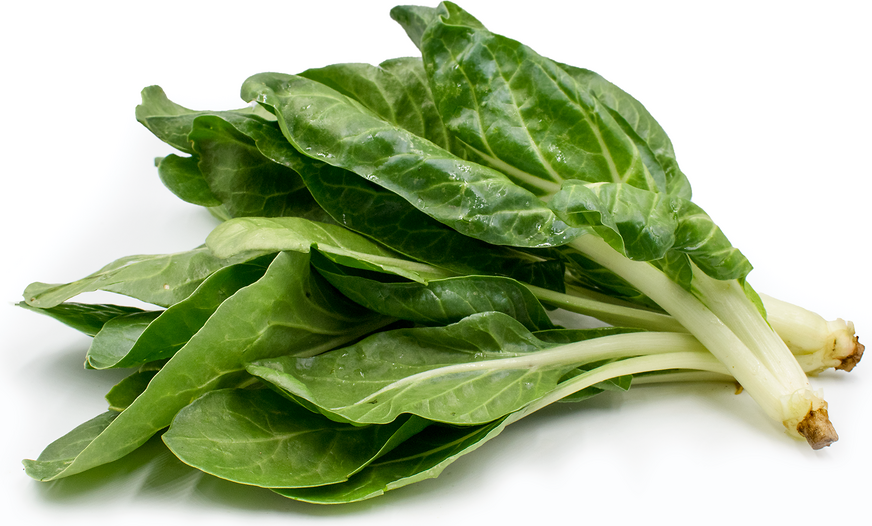


Barese Swiss Chard
Estimated Inventory, bunch : 0
Description/Taste
Barese Swiss chard is a dwarf variety of the broad leafy green. It has thick, bright white leaf stalks topped by dark green, glossy lance-shaped leaves. The leaves are smooth and have slightly curled edges. Barese Swiss chard is most often harvested around 25 centimeters tall, though the leaves can grow up to 45 centimeters in height. The greens are crisp and tender, the flavor somewhat spinach-like and not overly bitter. The white ribs of the Barese Swiss chard are crunchy and comparable to those of other Swiss chard varieties.
Seasons/Availability
Barese Swiss chard is available in the spring and through the summer months.
Current Facts
Barese Swiss chard is an heirloom variety, botanically known as Beta vulgaris var. cicla. (the cicla subspecies is for all chards). The leafy green is in the beet family, as are all Swiss chard varieties that grow edible tops and stems without the edible root. Barese Swiss chard is a quick growing baby leaf variety, that can also be used when fully grown. The Italian variety is occasionally called “perpetual spinach” though it isn’t related to spinach at all. It is considered a ‘perpetual’ type due to the opportunity for multiple harvests when the plant is cut just above the soil. This variety of Swiss chard is also known as Liscia (or smooth) Barese chard or Barese silverbeet.
Nutritional Value
Barese Swiss chard, like other chard varieties is a great source of vitamins A, C, and K. It is also a good source of fiber, potassium, manganese, iron, and vitamin E. Barese Swiss chard contains beneficial minerals and has antioxidant and anti-inflammatory properties. Swiss chard is considered one of the most nutrient-rich vegetables on the planet.
Applications
Barese Swiss chard can be used fresh, sautéed or boiled. Both leaves and stems can be used together or separately. Boiling chopped greens and stems will soften the stems. Add chopped Barese Swiss chard to salads along with other salad greens. Combine chopped chard with goat cheese, garlic, herbs and pancetta for a filling for meats, grilled cheese, ravioli or as a topping for toast. Sautee Barese Swiss chard in oil and garlic as a side dish or combine with potatoes and root vegetables for a hash. Use the Italian chard for quiches and tarts; it pairs well with eggs. Barese Swiss chard will keep in the refrigerator for up to 5 days when wrapped tightly in a plastic bag.
Ethnic/Cultural Info
Barese Swiss chard was selected and planted as part of the Mediterranean biome at England’s top eco visitor attraction, the Eden Project. The Eden Project is an educational charity and destination in Cornwall, England. The project location includes various biomes that were built on the site of an old crater and clay mine. Eden opened in early 2001, and has the world’s largest indoor rainforest, several different ecosystem biomes, and it provides multiple learning courses through partnerships with local schools and businesses. The success and popularity of the Barese Swiss chard earned it a place among 33 other products that are offered through Franchi Seeds in their Eden Project seed range.
Geography/History
Barese Swiss chard was developed as a baby leaf variety in Italy. The Mediterranean region is the birth place of Swiss chard, despite its common name. Barese Swiss chard is used throughout Italy by chefs and home cooks, and is popular for its quick growing times and flavor. The cold-tolerant Barese Swiss chard will grow in the winter in regions with mild climates, extending its availability. Barese Swiss chard is more commonly found in the cooler northern climates of Europe, the Mediterranean and North America.
Recipe Ideas
Recipes that include Barese Swiss Chard. One
| B & G Produce |
|
Barese Swiss Chard - Easy Stir Fry |




